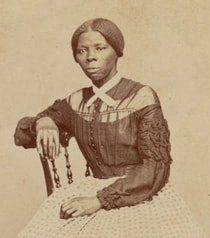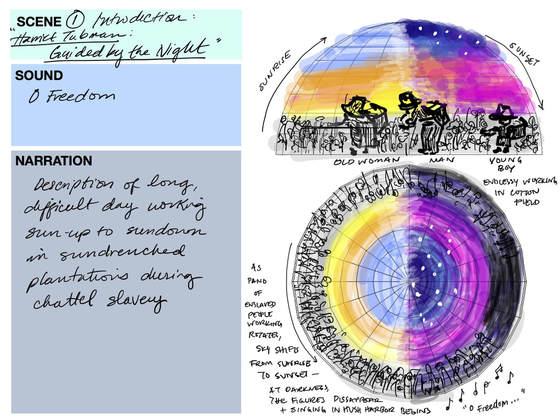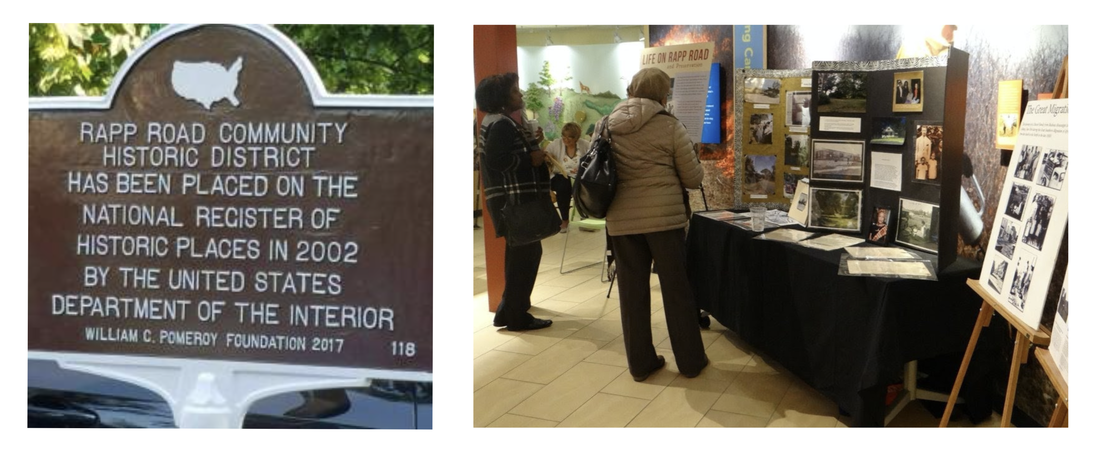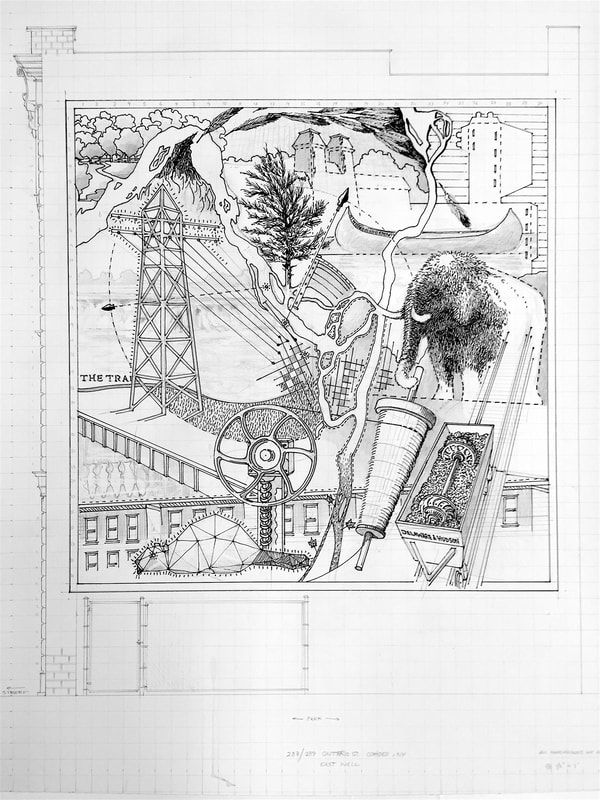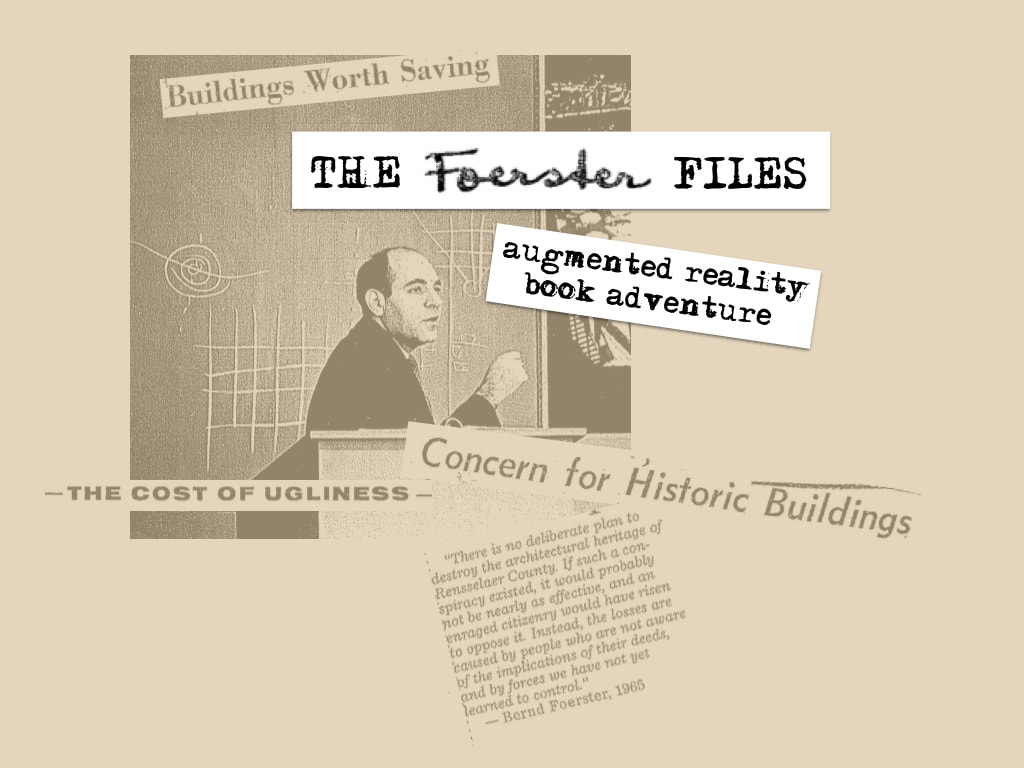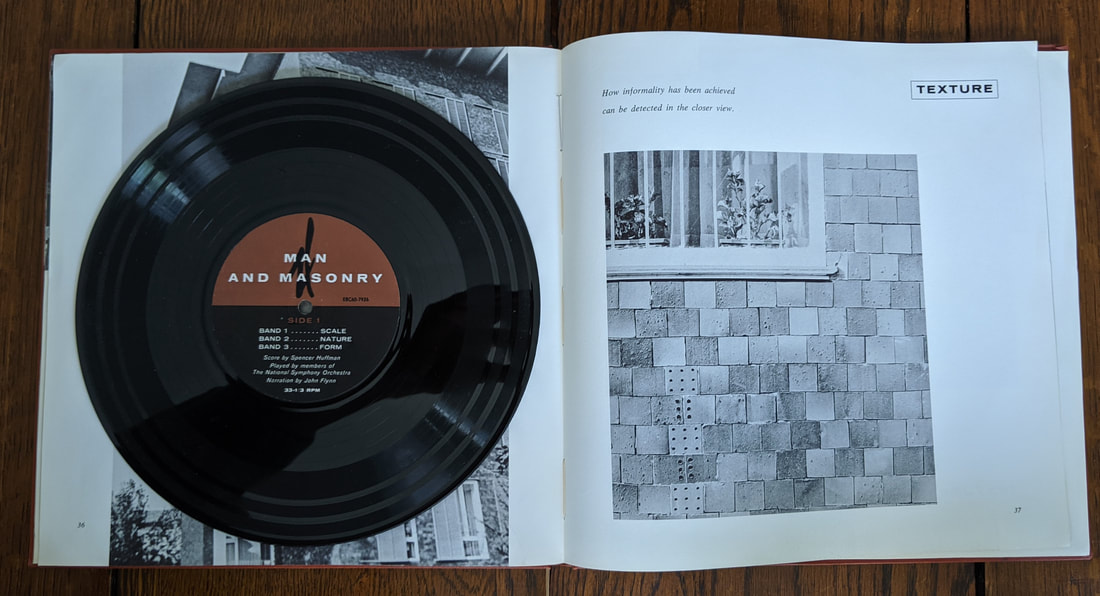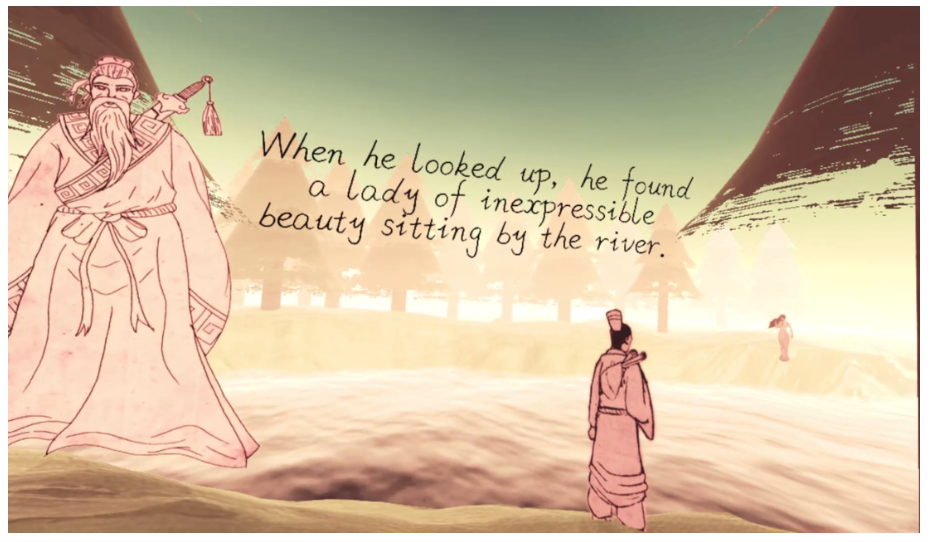Harriet Tubman: Guided By the Night
|
A mixed reality interactive planetarium show and take-home AR playset for upper elementary school students, to tell the fuller history of American hero Harriet Tubman through the lens of her astronomy and botany STEM expertise. This project was develped to the prototype phase in collaboration with MiSci: Museum of Innovation and Science, Schenectady NY and the AR Design for Cultural Heritage course.
Project Lead + Script Writer: Janell Hobson Interaction Design: Marc Destefano The Students of AR Design for Cultural Heritage: Matt Brown, Aisha Imtiaz, Nick Karalexis, Emily Lockwood, Tom MacIntisch, Kayla Cinnamon, Renae Rapp, Chris Chen, Jose Sanchez, Amy Schumacher. |
Rapp Road Family Album
The Rapp Road Family Album project was developed as an independent study spin-off from the AR Design for Cultural Heritage class with a former student from the class, Kyle Ring. The project was developed for the Rapp Road Historical Society, led by Stephanie Woodard. The Rapp Road community is a group of African-American families that came to Albany NY during the period of Great Migration in the 1920's and 30's, leaving their homes in Mississippi due to increasing racist violence in the region. Coming to Albany NY with few material resources the community relied on the engineering, architectural, entrepreneurial, and agricultural knowledge of its members to build an entire neighborhood of homes by hand, plant extensive gardens, build a community smokehouse, start businesses, and thrive. The community has continued to grow today, also preserving many of the original family ties.
Working with the community through a series of co-design workshops, The AR project was developed as an augmented book, for use with phones and tablets. The book is designed in the style of a family photograph album, but combines documentary footage from Todd Ferguson’s film Crossroads: The History of Rapp Road with oral histories of residents and photographic imagery and maps of the community through the years. The album is used by the Rapp Road Historical Association as a public education tool at heritage events in the region.
Working with the community through a series of co-design workshops, The AR project was developed as an augmented book, for use with phones and tablets. The book is designed in the style of a family photograph album, but combines documentary footage from Todd Ferguson’s film Crossroads: The History of Rapp Road with oral histories of residents and photographic imagery and maps of the community through the years. The album is used by the Rapp Road Historical Association as a public education tool at heritage events in the region.
Discover Cohoes
|
Discover Cohoes was developed in the AR Design for Cultural Heritage course to the prototype level for the City of Cohoes, New York as an AR scavenger hunt game for educating local middle schoolers about the history of their town. The town has a large waterfall, Cohoes Falls, which is second in size only to Niagara Falls in New York State. The falls are often highlighted for their hydropower role in industrial history, but this waterfall is the site of the Iroquois Confederacy, which still persists, bringing together six previously warring Native American nations in 1722. The Confederacy was one of the first examples of participatory democracy, and directly inspired Benjamin Franklin and others for the structure of the US Constitution.
|
Working with middle school students and teachers in a co-design process, Discover Cohoes was developed to interact with a planned mural in the downtown as well as other sites of interest in to compliment existing public school curriculum. Four learning modules were developed in the prototype, with plans for a further three sketched out to the concept level. After completing each module, the player receives a 3D model on the phone or tablet of a local animal that also has cultural significance for Native American nations in the area. After collecting the 3D models, players can bring their phones to the public library nearby to receive a prize of a set of cut-and-fold cardstock models of the animals that are printed with more information about the role they play in Native American culture, and can be built and decorated by the player.
The Students of AR Design for Cultural Heritage:
Steve Bloniarz, Samuel Chung, Krista Cook, Gaurav Dass, Samuel Goodwin, Simon Hopkins, Sheldon Noel, Kirsten Pilla, Maya Tung, Zachary Pearson, Cameron Mine.
The Students of AR Design for Cultural Heritage:
Steve Bloniarz, Samuel Chung, Krista Cook, Gaurav Dass, Samuel Goodwin, Simon Hopkins, Sheldon Noel, Kirsten Pilla, Maya Tung, Zachary Pearson, Cameron Mine.
Finding Roebling
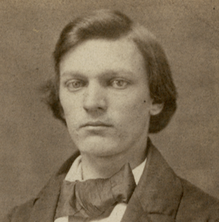
An augmented reality installation highlighting the contents of the Roebling Collection at the RPI Archives, and a new book from historian Erica Wagner (Chief Engineer: The Man Who Built the Brooklyn Bridge), a meticulously researched, brilliant examination of the personal and professional life of Washington Roebling.
"Finding Roebling" is a multimodal AR experience, all centered on the history of Washington Roebling, builder of the Brooklyn Bridge. Traditional exhibit cases, filled with original and reproduced artifacts, are augmented by providing additional imagery, animations, 3D models, and text. A second part of the exhibit simulates author Erica Wagner's research journey through the Rensselaer archives to develop her new biography of Washington Roebling, "Chief Engineer: The Man Who Built the Brooklyn Bridge.“ Erica's desk is playfully re-created, strewn with reproductions of manuscripts and objects from the Rensselaer archives that were instrumental in her research. Using a phone or tablet, the user accesses AR content tied to each physical object, including videos, animations, and images that illustrate Erica's story.
“Finding Roebling” was made possible by the generosity of:
Rensselaer Alumni Association
Friends of Folsom Library
Rensselaer County Historical Society
Hudson Mohawk Industrial Gateway
Rensselaer HASS: School of Humanities, Arts, and Social Sciences
“Finding Roebling” Project Team:
Exhibit Producer
Andrew White, Director of Rensselaer Libraries
Author
Erica Wagner, Author of “Chief Engineer: The Man Who Built the Brooklyn Bridge”
Exhibit Designer
Jenifer Monger, Archivist
Experience Designer
Rebecca Rouse, Assistant Professor of Arts
Lead Developer and Interface Designer
Noah Zucker, GSAS: Games and Simulations Arts and Sciences Student, Class of 2019
Voice Actor
Marc Destefano, Senior Lecturer of Cognitive Science
“Finding Roebling” was made possible by the generosity of:
Rensselaer Alumni Association
Friends of Folsom Library
Rensselaer County Historical Society
Hudson Mohawk Industrial Gateway
Rensselaer HASS: School of Humanities, Arts, and Social Sciences
“Finding Roebling” Project Team:
Exhibit Producer
Andrew White, Director of Rensselaer Libraries
Author
Erica Wagner, Author of “Chief Engineer: The Man Who Built the Brooklyn Bridge”
Exhibit Designer
Jenifer Monger, Archivist
Experience Designer
Rebecca Rouse, Assistant Professor of Arts
Lead Developer and Interface Designer
Noah Zucker, GSAS: Games and Simulations Arts and Sciences Student, Class of 2019
Voice Actor
Marc Destefano, Senior Lecturer of Cognitive Science
The Foerster Files
This AR Design for Cultural Heritage course project was developed to the prototype stage for the New York State Office of Historic Preservation, to examine the history of urban renewal in the 1960's and 1970's in the Albany and Troy areas. Reserching the topic, the students came across Bernd Foerster, Architecture professor at RPI in the 1960s and 70s, filmmaker, author, one of the pioneers of the preservation movement pushing back against urban renewal. The students found Foerster's publication, Man and Masonry (1960), which can be understood as a kind of proto-augmented book, with an LP in the back and commissioned orchestral work the reader is meant to listen to as she reads the volume. Connecting with this form of the augmented book, the students designed a fictionalized ‘lost file’ of Foersters’ that uses archival film, audio, and object reproductions plus and interactive map to tell the story of urban renewal in Troy.
AR Design class project by Tiffany Licata, Jason Woods, Lucas Volle, Dan Gorman, Noah Zucker, Kyle Ring, Alec Hodgkinson, Justin Buergi, Vignesh Babu
AR Design class project by Tiffany Licata, Jason Woods, Lucas Volle, Dan Gorman, Noah Zucker, Kyle Ring, Alec Hodgkinson, Justin Buergi, Vignesh Babu
Digital Blackfriars

In collaboration with Early Modern English Theatre scholar Kirk Quinsland (Fordham University), Digital Blackfriars represents the opening phase of an ongoing digital humanities project that focuses on the topography of the Blackfriars district in early modern London, and the ways in which this location influenced works written specifically for the Blackfriars Theatre.
The project cross-references dramatic texts with archival manuscripts housed at the Folger Shakespeare Library, tracing the relationships between geographical and topographical place, play, and audience. The Digital Alchemist focuses on Ben Jonson's 1610 play The Alchemist, using it as a case study for bringing together archival material, dramatic text, and twenty-first century digital tools in ways that illuminate both the text and the history of London.
Visit the official project site here.
The project cross-references dramatic texts with archival manuscripts housed at the Folger Shakespeare Library, tracing the relationships between geographical and topographical place, play, and audience. The Digital Alchemist focuses on Ben Jonson's 1610 play The Alchemist, using it as a case study for bringing together archival material, dramatic text, and twenty-first century digital tools in ways that illuminate both the text and the history of London.
Visit the official project site here.
Language Lab of the Future: Learning Chinese in VR
Led by Professor Helen Zhou, and in collaboration with students Noah Zucker, Andy Lao, Liang Li, Angela Ding, Nicholas Shaeffer, and Robert Eldredge this project aims to develop the language lab of the future, using head mounted display VR technology. Instead of having students listen to audio and record their voices, as is done in a traditional language lab, this project places students in a visually and auditorily rich, interactive and playful environment, with the aim of increasing engagement and bettering learning outcomes. An initial prototype of the project was exhibited at GDC 2017. Visit the official project site here.
Below Stairs
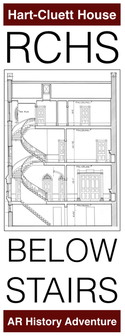
Visitors to the Rensselaer County Historical Society’s house museum, The Hart-Cluett Mansion, can now supplement their tour experience with an interactive Augmented Reality adventure designed for mobile phones. In “Below Stairs” visitors play the part of a servant working on a trial period during an actual event at the house, a Winter ball in 1850. Will you land the job or not? Come see if you’ve got what it takes to succeed below stairs in 1850s Troy!
This project originated in a Spring 2014 special topics course, COMM 4965/6963 Mobile AR Design, in which students worked in teams to develop prototypes for RCHS while learning an interdisciplinary approach to AR and user-centered design.
Experience Design: Rebecca Rouse, Kate Tyrol, Jacky Doll
Acknowledgments: Ilene Frank, RCHS Executive Director; Stacy Pomeroy-Draper, RCHS Curator;
The students of COMM 4965/6963 (Leo Antelles, Sebastian Basch, Jason Coley, Jacky Doll, John Grover, Sarabeth Jaffe, Irene Khan, Leslie King, Raven Kwok, Nick Lewis, Doris Xian.)
This project originated in a Spring 2014 special topics course, COMM 4965/6963 Mobile AR Design, in which students worked in teams to develop prototypes for RCHS while learning an interdisciplinary approach to AR and user-centered design.
Experience Design: Rebecca Rouse, Kate Tyrol, Jacky Doll
Acknowledgments: Ilene Frank, RCHS Executive Director; Stacy Pomeroy-Draper, RCHS Curator;
The students of COMM 4965/6963 (Leo Antelles, Sebastian Basch, Jason Coley, Jacky Doll, John Grover, Sarabeth Jaffe, Irene Khan, Leslie King, Raven Kwok, Nick Lewis, Doris Xian.)
AR tour for Atlanta's Historic Auburn Avenue

In the AR Cultural Heritage working group led by Professors Jay David Bolter and Nassim JafariNaimi, we are in the early phases of designing an augmented reality tour for the historic Auburn Avenue area of Atlanta. The project is designed to accompany the debut of a new streetcar line planned for the area and utilizes the Argon AR browser platform.
Experience Design: Jay David Bolter, Nassim JafariNaimi, Rebecca Rouse, Samuel Zwaan, Ray Chen, Govind Lingam
Experience Design: Jay David Bolter, Nassim JafariNaimi, Rebecca Rouse, Samuel Zwaan, Ray Chen, Govind Lingam
pARadise gARden
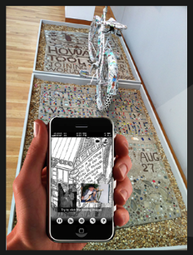
AR Experience for the High Museum of Art
Acclaimed outsider artist, Howard Finster (1916-2001), was a Baptist minister in Summerville, GA, where he created a fantastical art environment, Paradise Garden. Several works from the garden are now displayed in Atlanta's High Museum of Art. pARadise gARden uses the Argon AR browser to bring the immersive feeling of Finster's garden into the museum environment and educate museum visitors about the original context of the works on display.
Experience Design: Jay David Bolter, Fred Leighton, Rebecca Rouse, Nachiketas Ramanujam, Sanika Mokashi, Chanju Lee, Libo Su.
Argon Developed By: Blair Macintyre, Alex Hill, Maribeth Gandy, Brian Davidson, Jeff Wilson, Hafiz Rouzati, Cory Simon
Acclaimed outsider artist, Howard Finster (1916-2001), was a Baptist minister in Summerville, GA, where he created a fantastical art environment, Paradise Garden. Several works from the garden are now displayed in Atlanta's High Museum of Art. pARadise gARden uses the Argon AR browser to bring the immersive feeling of Finster's garden into the museum environment and educate museum visitors about the original context of the works on display.
Experience Design: Jay David Bolter, Fred Leighton, Rebecca Rouse, Nachiketas Ramanujam, Sanika Mokashi, Chanju Lee, Libo Su.
Argon Developed By: Blair Macintyre, Alex Hill, Maribeth Gandy, Brian Davidson, Jeff Wilson, Hafiz Rouzati, Cory Simon
Voices of Oakland
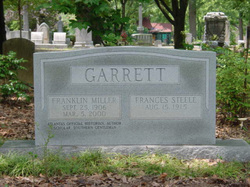
Handheld AR Experience in Atlanta's historic Oakland Cemetery
The Voices of Oakland uses Augmented Reality (AR) to introduce the visitor to the personal histories of the cemetery. Carrying an iPhone, the visitor walks among the graves and listens to the voices of historical figures interred at Oakland. The visitor can tailor the experience to suit her interests through the touchscreen interface. The Voices of Oakland is a prototype created using Argon, an AR browser which was conceived and implemented by the Augmented Environments Lab in the GVU Venter at the Georgia Institute of Technology.
Experience Design: Jay David Bolter, Rebecca Rouse, Jenifer Vandagriff, Steven Dow, Maribeth Gandy, Jaemin Lee, Danny Muller, Nachiketas Ramanujam, Fred Leighton, Sanika Mokashi, Chanju Lee, Libo Su.
Argon Developed By: Blair Macintyre, Alex Hill, Maribeth Gandy, Brian Davidson, Jeff Wilson, Hafiz Rouzati, Cory Simon
Music: Brendan Padgett Voices: Manny Oliveira, Jackie Pricha, Steven Wunch.
The Voices of Oakland uses Augmented Reality (AR) to introduce the visitor to the personal histories of the cemetery. Carrying an iPhone, the visitor walks among the graves and listens to the voices of historical figures interred at Oakland. The visitor can tailor the experience to suit her interests through the touchscreen interface. The Voices of Oakland is a prototype created using Argon, an AR browser which was conceived and implemented by the Augmented Environments Lab in the GVU Venter at the Georgia Institute of Technology.
Experience Design: Jay David Bolter, Rebecca Rouse, Jenifer Vandagriff, Steven Dow, Maribeth Gandy, Jaemin Lee, Danny Muller, Nachiketas Ramanujam, Fred Leighton, Sanika Mokashi, Chanju Lee, Libo Su.
Argon Developed By: Blair Macintyre, Alex Hill, Maribeth Gandy, Brian Davidson, Jeff Wilson, Hafiz Rouzati, Cory Simon
Music: Brendan Padgett Voices: Manny Oliveira, Jackie Pricha, Steven Wunch.
[inbox]
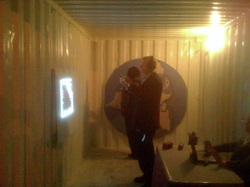
Handheld AR Art Installation about the shipping container system
Installed at the ACM Creativity and Cognition 2009 conference at the Berkeley Art Museum, [inbox] is an art installation about the shipping container system and its inventor, Malcom McLean. The experience is set inside an ISO standards 20" shipping container, and uses handheld AR via the Gizmondo, 35mm slides, a map, a mannequin, audio recordings, and paper cut-and-fold models to tell the story of the invention of the shipping container system, and guide visitors through their own complex relationships with the system today.
Experience Design: Rebecca Rouse, Evan Barba
Voice: Brendan Padgett
Music: Oliver Jan
Installed at the ACM Creativity and Cognition 2009 conference at the Berkeley Art Museum, [inbox] is an art installation about the shipping container system and its inventor, Malcom McLean. The experience is set inside an ISO standards 20" shipping container, and uses handheld AR via the Gizmondo, 35mm slides, a map, a mannequin, audio recordings, and paper cut-and-fold models to tell the story of the invention of the shipping container system, and guide visitors through their own complex relationships with the system today.
Experience Design: Rebecca Rouse, Evan Barba
Voice: Brendan Padgett
Music: Oliver Jan
